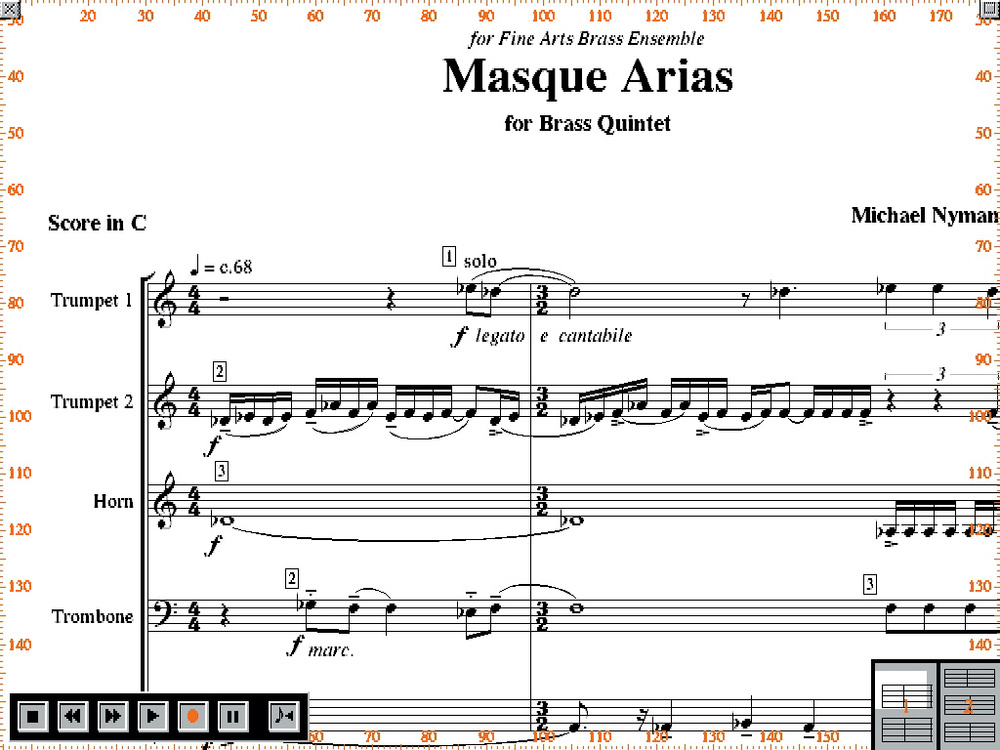

#SIBELIUS 5 ADDS NOTES ON MEASURE 6 SOFTWARE#
His books include: "The Musical iPad", "The iPad in The Music Studio", "Finale An Easy Guide to Music Notation (Third Edition)", "Sibelius: A Comprehensive Guide to Sibelius Music Notation Software (Second Edition)", "Teaching Music With Technology (Second Edition)", "Recording in the Digital World", "YouTube in Music Education" and "Finding Funds for Music Technology". He has authored multiple online courses in music technology and music history. Tom Rudolph is an adjunct instructor for Berklee College of Music Online School, The University of the Arts, Central Connecticut State University, VanderCook MECA, and the Rutgers Mason Gross School of Music. You can enter additional tempo markings as needed.ĭr. Select the marking you created and click assign.Choose the note value from the pull down menu.Select Tempo Marks and then click “Create Tempo Mark.”.Doing this will set the tempo to the specific metronome marking or beats per minute. When you start a new score, using the Setup Wizard, there is an option to include an initial tempo marking or metronome mark. Double-click on the copied metronome mark and edit the number to the desired tempo.Paste it into the bar where you want to change the tempo.Another way to go is to copy and paste the metronome mark and then edit it. To enter another metronome mark, you can follow the above steps – select the bar and choose Text > Metronome mark. Type: = and the desired beats per minute.Right-click the mouse and choose the desired note value.Sibelius 7: Choose Text > Styles > Metronome Mark Sibelius 6: Choose Create > Text > Metronome Mark.If you forget to do this when you are creating your Sibelius score, you can add one after the fact: When you start a new score, in the Quick Start menu, there is an option to include an inital tempo marking or metronome mark. Then, enter tempo changes where you want them to occur later in the piece. The fisrt step is to indicate the tempo above the first bar of the piece. Click OK.This post deals with setting an initial tempo marking in a Finale or Sibelius file and then changing it as the piece progresses. I like to uncheck the option to Add Rhythmic Markings). For sol-fa that appears above the stave, click on the drop-down box next to Main Text Style and choose Lyrics above staff (check the other settings as well. To add the solfege select all bars that contain the melody (click on first bar and shift-click on last bar) and then go to Plugins > Text > Add Tonic Solfa (Sibelius 5 and 6) or Text tab > Plugins > Add Tonic Sol-fa. Type lyrics with a space between words or a hyphen between syllablesĤ. Enter the song lyrics by selecting the first note and press Ctrl+L (Command+L on Mac). The example below describes the process for adding solfege above the stave in a score with lyrics.ģ.

If you’d like to add the solfege syllables to a melodic score, Sibelius can create them for you automatically – either below the stave, or if you have lyrics in your score, above the stave. The Kodály method makes use of moveable do solfege. Fine-tune the position of the Z with the arrow keys Using the Format settings on the left side, change the font to Arial and increase the font size (to around 15)Ĩ. Change the font to Arial and increase the font size (to around 15)ī) Sibelius 7: click on the Text tab.

Press Escape once (the Z should be still selected – blue)Ī) Sibelius 5 and 6: go to Window > Properties and click on the Text tab. Click on the stave where the crotchet rest was and type the letter Z on the stave (don’t worry about the size or position at this stage)ĥ. Find an empty space on your score, right-click and choose Text > Other staff text > Plain text. Hide the rest by right-clicking on it and choosing Hide or Show > HideĤ. Create your song with a normal crotchet restĢ. The technique involves creating a regular rest and then hiding it so that you can place a large Z over the top. Sibelius doesn’t have a ready-made Zaa, but it’s fairly straightforward to make one. The rhythm syllable for a rest is known as Zaa and it looks like a capital Z.


 0 kommentar(er)
0 kommentar(er)
